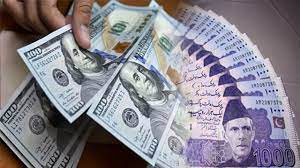1 USD to PKR
The exchange rate between the US Dollar (USD) and the Pakistani Rupee (PKR) is a critical indicator for individuals and businesses involved in international transactions. It affects everything from import and export businesses to personal remittances and investment decisions. Understanding the factors that influence this exchange rate can help individuals and businesses make informed financial decisions. In this article, we will explore the dynamics of the 1 USD to PKR exchange rate, the factors that influence it, and its implications for various stakeholders.
The Basics of Currency Exchange Rates
Currency exchange rates represent the value of one currency in terms of another. In this case, the 1 USD to PKR rate tells us how many Pakistani Rupees are equivalent to one US Dollar. Exchange rates can be influenced by a variety of factors, including economic conditions, political stability, and market speculation. These rates are typically quoted in financial markets and can fluctuate frequently based on changes in these underlying factors.
Factors Influencing the USD to PKR Exchange Rate
Several factors can influence the exchange rate between the US Dollar and the Pakistani Rupee. Some of the most significant factors include:
1. Economic Indicators
Economic indicators such as inflation rates, interest rates, and gross domestic product (GDP) growth can have a substantial impact on exchange rates. For example, higher inflation in Pakistan compared to the US can lead to a depreciation of the PKR against the USD. Conversely, higher interest rates in the US can attract foreign investment, increasing demand for the USD and leading to an appreciation against the PKR.
2. Political Stability
Political stability is another crucial factor that affects exchange rates. Political uncertainty or instability in Pakistan can lead to a loss of investor confidence, causing the PKR to weaken against the USD. On the other hand, a stable political environment can boost investor confidence and support the value of the PKR.
3. Trade Balance
The trade balance, which is the difference between a country’s exports and imports, also plays a vital role in determining exchange rates. A trade deficit, where imports exceed exports, can put downward pressure on the PKR as more foreign currency is needed to pay for imports. Conversely, a trade surplus can support the value of the PKR.
4. Foreign Exchange Reserves
The level of foreign exchange reserves held by a country can influence its currency’s value. Higher reserves can provide a buffer against external economic shocks and help stabilize the currency. Pakistan’s foreign exchange reserves, therefore, play a critical role in determining the strength of the PKR against the USD.
5. Market Speculation
Market speculation and investor sentiment can also cause short-term fluctuations in exchange rates. Speculators may buy or sell currencies based on their expectations of future economic or political developments, leading to changes in the Dollar to PKR rate.
Implications of the USD to PKR Exchange Rate
The exchange rate between the USD and PKR has several implications for different stakeholders:
1. Importers and Exporters
For businesses involved in international trade, exchange rate fluctuations can significantly impact profitability. A weaker PKR makes imports more expensive, increasing costs for businesses that rely on imported goods. Conversely, a stronger PKR can make exports less competitive in international markets.
2. Remittances
For individuals sending money to Pakistan from abroad, a weaker PKR means that they get more rupees for each dollar sent. This can be beneficial for families receiving remittances, as it increases their purchasing power.
3. Investors
Investors holding assets in either currency can be affected by exchange rate changes. A weaker PKR can lead to lower returns on investments denominated in rupees, while a stronger PKR can enhance the value of these investments when converted to dollars.
4. Travelers
For travelers, exchange rate fluctuations can affect the cost of travel and expenses. A stronger USD means that traveling to Pakistan becomes cheaper for Americans, while a weaker USD can make it more expensive for Pakistanis traveling to the US.
Current Trends and Future Outlook
As of mid-2024, the exchange rate between the USD and PKR has been influenced by several factors, including global economic conditions, Pakistan’s economic policies, and geopolitical developments. The Pakistani government has been implementing measures to stabilize the economy, such as securing loans from international financial institutions and managing inflation.
Looking ahead, the future outlook for the USD to PKR exchange rate will depend on various factors, including economic reforms in Pakistan, global economic trends, and geopolitical stability. While it is challenging to predict exact movements in exchange rates, staying informed about these factors can help individuals and businesses navigate the uncertainties of the foreign exchange market.
Conclusion
Understanding the dynamics of the 1 USD to PKR exchange rate is essential for anyone involved in international financial transactions. By keeping an eye on economic indicators, political developments, trade balances, and market sentiment, individuals and businesses can make informed decisions and mitigate the risks associated with currency fluctuations. As the global economy continues to evolve, staying informed and adaptable will be key to managing the impacts of exchange rate changes on personal and business finances.



